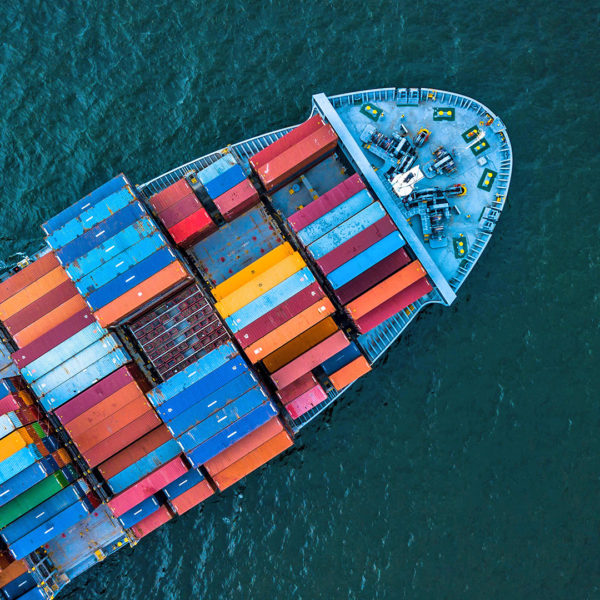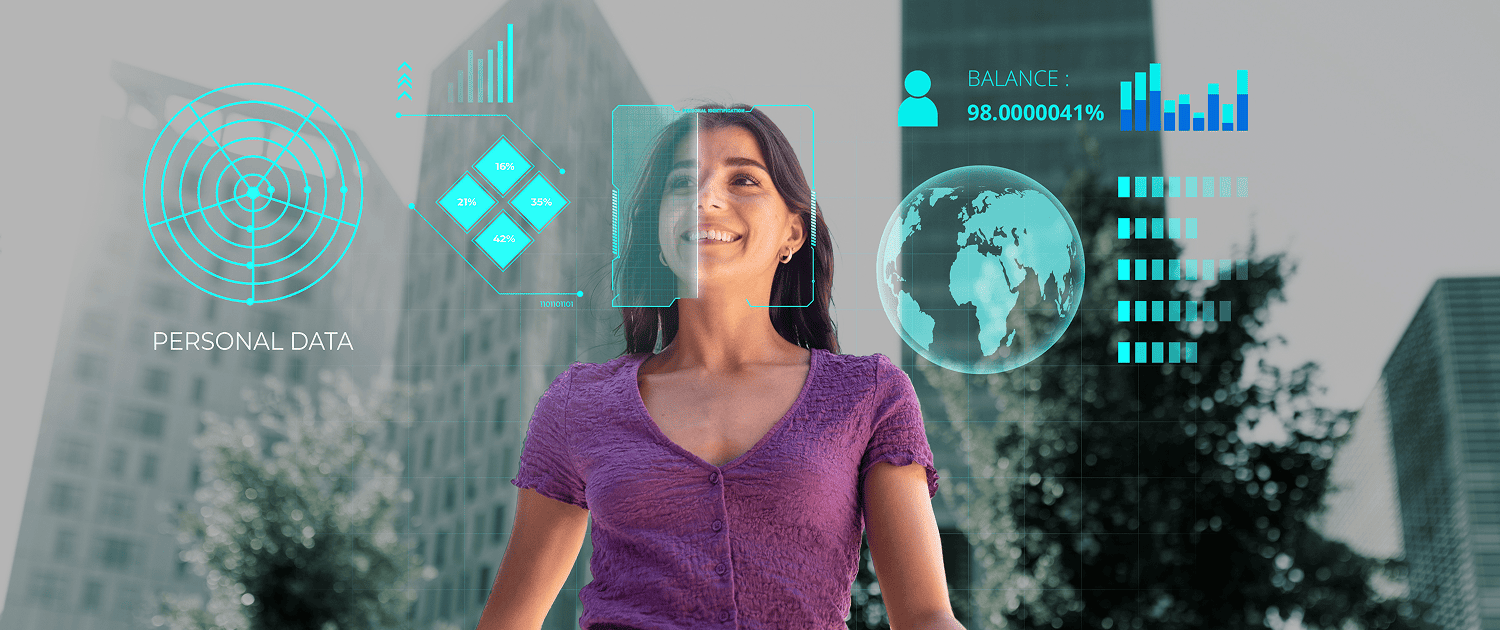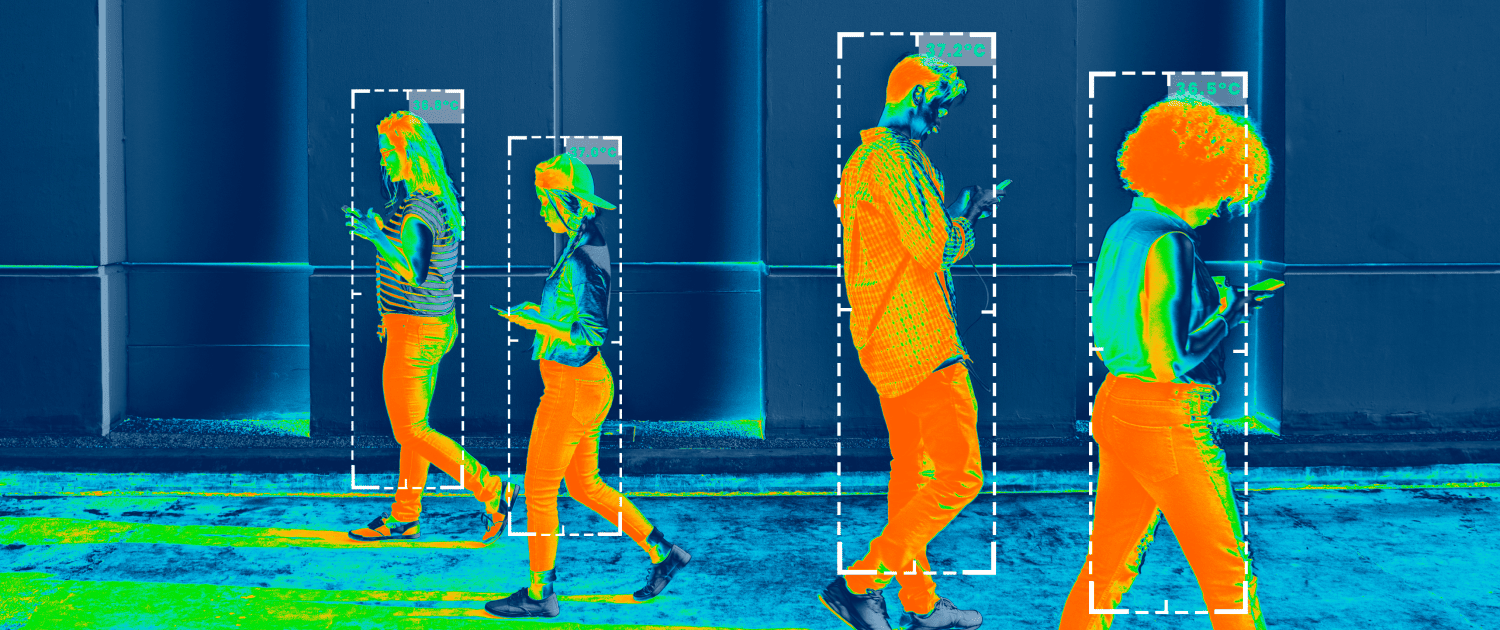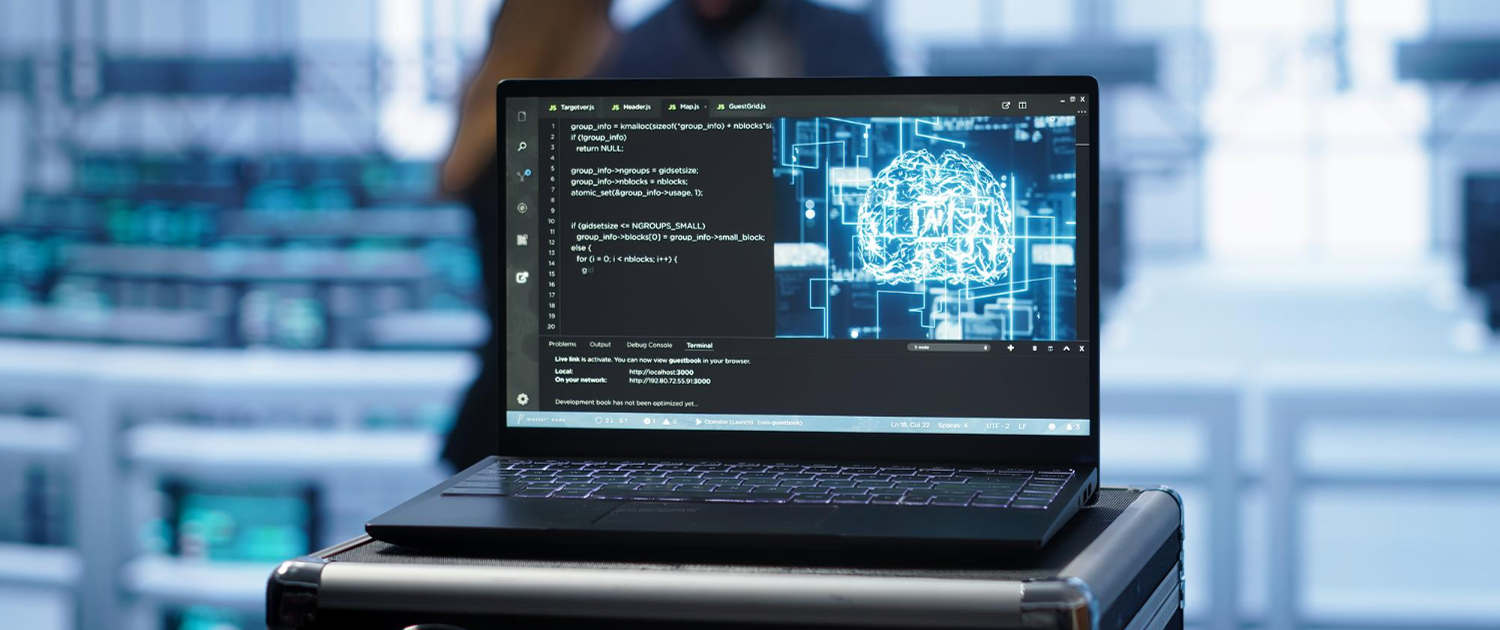
Logistics and transportation companies have a crucial role to play in the global business environment. To remain competitive, they need to move their goods reliably and efficiently within a given time frame. Nowadays, logistics companies are exploring new ways to integrate smart mobile devices into their business operations.
Digital logistics platforms offer numerous benefits such as facilitating communication between carriers and drivers, optimizing transportation by increasing efficiency, reducing costs, providing convenience, and expanding business. Entrepreneurs can leverage these platforms to tap into the billion-dollar transportation and logistics industry.
In this article, we will discuss logistics app development, types of digital logistics platforms, their key features, and the technology stack behind them to shed light on the cost of logistics app development.
Types of Digital Logistics Platforms
- Fleet Management App: This app is designed to manage fleets and vehicles. It helps organize, manage, and coordinate vehicles to ensure that the entire fleet runs smoothly.
- On-Demand Logistics App: This app caters to users and manufacturers by assigning drivers by request. It is an ideal platform for those who wish to run their business in an Uber style.
- Supply Chain Platform: This is a complex solution that unites the processes of manufacturers, carriers, and end-users. It covers product development, production, procurement, logistics, and more.
- Warehouse Management App: This app stores data on products in a warehouse and provides instant access to them. It helps understand the accessibility of each item, the available inventory, the location of items in the warehouse, the warehouse personnel and their daily attendance, and even their performance.
- Forwarding & Tracking Apps: These apps provide real-time updates regarding routes taken and the location of items. They give users information about the workforce and fleet locations.
If you are unsure about the type of logistics app that you need for your business, contact us, and we will provide the necessary information at no charge.
Essential Features of Mobile Logistics Apps
The functionality of a digital logistics platform depends on the business model and the type of application. Generally, you need an app that consists of three parts to manage logistics in and out: one for customers, one for drivers, and one for admins. Let’s look at the features of each of these apps separately to gain clarity on the cost of logistics app development.
Customer App
To ensure full functionality, you need to consider the following features:
- Authentication: Users should be able to log in to your digital logistics platform in intuitive and easy steps. Provide registration options through manual entry, etc.
- Selection of vehicle: Users should be able to select the vehicle (car, van, truck, etc.) based on the size and weight of the deliverable parcels.
- Estimating logistics & supply app development costs for scheduling and delivery management: Allow users to set the delivery date by adding the timeframe and day on which they want goods to be picked up and delivered to the destination.
- Estimated charge: Give users an estimate of how much it will cost after selecting a vehicle. The rate calculator will add value to your digital logistics platform as users prefer to know the cost of a service before using it.
- Integrated Payment Option: Allow one-click payment by multiple payment gateways to offer an “all-in-one” digital logistics platform for users. Examples of platforms that offer integrated payment options for an “all-in-one” digital logistics platform include Stripe, PayPal, Square, Braintree, and Adyen.
- Tracking: Enable users to alleviate their concerns regarding the whereabouts of their packages by offering real-time tracking capabilities through the integration of third-party services.
- Push Notifications: By leveraging real-time push notifications through seamless integration with third-party services, the logistics platform effectively enhances user engagement, fostering increased interaction and participation.
- Rating and Feedback: Incorporate an option to rate and review services into your digital logistics platform to receive feedback from users.
Driver App
A must-have solution for efficient delivery operations, providing seamless login, comprehensive profile management, real-time status updates, flexible acceptance options, and detailed shipping information.
- Easy Login: Allow drivers to log in using phone numbers, email addresses, or social media accounts.
- Profile Settings: Enable drivers to update their information, enabling admins to make informed decisions regarding delivery assignments.
- Status Update: Allow drivers to set their availability or unavailability, ensuring deliveries are assigned to available drivers.
- Accept/Decline Option: Provide drivers with the ability to accept or decline delivery requests based on location and preferences.
- Shipping Details: Include freight-related details such as fuel consumption, parcel weight, toll charges, and receiver information (name, address, phone number).
- Route and Navigation: Offer the best route with real-time traffic information to help drivers reach their destinations efficiently.
- Delivery History: Provide drivers with a record of their completed deliveries and transactions.
Admin App
- Dashboard: Display user details, pending and completed shipments with real-time information, and business-related insights for performance improvement.
- Fleet Management: Access and manage the fleet, including adding new vehicles and updating detailed vehicle information for user selection.
- Payment Management: Streamline financial transactions within the app, including facilitating payments to drivers, processing customer refunds, approving driver-initiated payments, and meticulously tracking all financial transactions.
- Drivers Management: Help admins manage drivers, assign tasks, and monitor their activities on the road, including tracking stops and idle time.
- Chat Integration: Enable seamless communication between admins, drivers, and users through an integrated chat feature.
- Analytics: Provide detailed analytics on platform performance to assist admins in making informed decisions for increased profitability and revenue.
Technology Stack
Developing a cutting-edge logistics app requires the right technology stack. Here is a list of core technologies commonly used in digital logistics platforms.
- Programming Languages:
- JavaScript
- Python
- Java
- Swift (for iOS development)
- Kotlin (for Android development)
- Frontend Development Frameworks and Libraries:
- React
- Angular
- Vue.js
- Backend Development Frameworks and Libraries:
- Node.js
- Django (Python)
- Spring Boot (Java)
- Ruby on Rails
- Databases:
- MySQL
- PostgreSQL
- MongoDB
- Redis (for caching)
- Cloud Services and Infrastructure:
- Amazon Web Services (AWS)
- Microsoft Azure
- Google Cloud Platform (GCP)
- API Integration and Communication:
- RESTful APIs
- WebSocket (for real-time communication)
- GraphQL (for flexible data queries)
- Mobile App Development:
- React Native (for cross-platform app development)
- Flutter (for cross-platform app development)
- Swift (for iOS development)
- Kotlin (for Android development)
- Geolocation and Mapping:
- Google Maps API
- Mapbox
- OpenStreetMap
- Security and Authentication:
- JSON Web Tokens (JWT)
- OAuth 2.0
- Encryption and hashing algorithms.
- Analytics and Monitoring:
- Google Analytics
- Firebase Analytics
- Prometheus
- Grafana
Additionally, when selecting a technology stack, it is crucial to consider DevOps practices and tools that promote efficient collaboration, continuous integration, deployment, and monitoring. Integration of DevOps principles ensures streamlined development and operations, enhancing the overall efficiency and reliability of the logistics app.
Crunch Case Study in Logistics & Supply Chain Platform Development
One notable project in the logistics domain that showcases Crunch’s expertise is an AI-powered logistics management solution designed to optimize supply chain operations across various industries. The goal was to enhance and support an existing logistics and transportation platform.
Solution:
Crunch’s dedicated team worked diligently for two years to develop a dynamic supply chain platform consisting of three key components:
- Web App for Managers: This component provides supply chain visibility, enables carrier selection, optimizes delivery and cargo plans, and offers business intelligence dashboards for data collection and analysis.
- Mobile App for Deliverers: The mobile app empowers deliverers to create tasks, monitor real-time deliveries, enhance customer service, and ensure transparency by tracking every stage of the delivery process.
- Mobile App for Clients: This app allows clients to place orders and track their deliveries conveniently.
The solution incorporated vital features such as real-time GPS tracking of vehicles, automatic route generation based on load capacity, multiple time windows, cross-docking, inventory management, and other key indicators.
Results:
Continuous improvement and optimization of the logistics management solution provided customers with the ability to create effective transport schedules, reduce logistics costs, maximize vehicle productivity, and optimize profits for each delivery.
Valuable Statistic:
According to industry research, the global logistics market is projected to reach a value of $15.5 trillion by 2023, with digital logistics platforms playing a significant role in this growth. By investing in logistics app development now, businesses can seize the opportunity to thrive in the expanding logistics industry.
What Members Should be on the Development Team
When developing a successful logistics app, assembling an essential team with key roles is vital. Here are the crucial members that should be part of your team:
- Project Manager: A visionary leader who oversees the development process, sets goals, and ensures efficient coordination among team members.
- Business Analyst: An insightful professional who analyzes market trends, understands user requirements and translates them into actionable app features.
- UI/UX Designer: A creative expert who crafts visually appealing and user-friendly interfaces to enhance the app’s appeal and ease of use.
- Full-Stack Developer: A versatile technologist proficient in both frontend and backend development, capable of handling the entire app’s technical aspects.
- QA Engineer: A meticulous tester who rigorously assesses the app’s functionality, and identifies and resolves bugs, ensuring a smooth user experience.
- DevOps Engineer: A skilled professional who streamlines the development process by implementing efficient deployment, monitoring, and maintenance practices.
- Technical Writer: A proficient communicator who creates clear and comprehensive documentation, providing users and stakeholders with valuable insights into the app’s features and functionalities.
- Stakeholders: Collaborative individuals who leverage their industry expertise and insights to provide valuable feedback, driving the success of the app.
It is important to emphasize that the team composition mentioned earlier serves as a recommended framework for developing a successful logistics app. However, every project is unique, and the specific composition of your team should be tailored to meet your specific requirements and objectives. By carefully assessing your project needs and considering the expertise and skills required, you can assemble a dynamic and efficient team that is best suited to bring your logistics app vision to life.
The synergy among team members and their collective dedication are paramount in delivering a logistics app that stands out in the competitive market.
Process and Time Estimation to Build a Logistics App
Building a logistics app involves a series of well-defined processes and an understanding of the timeframes involved. Here’s a glimpse into the typical stages and time estimation for developing a logistics app:
- Requirements Gathering and Analysis: In this initial phase, the development team collaborates with stakeholders to gather requirements, analyze business needs, and define the app’s scope. This process usually takes 1-2 weeks.
- UI/UX Design: The creative team works on designing the app’s user interface and experience. This stage involves creating wireframes, mockups, and interactive prototypes to align with the app’s functionality. Designing a captivating UI/UX may take around 2-3 weeks though depending on your requirements.
- Frontend and Backend Development: The development team commences the coding process for both the mobile app’s frontend and backend functionalities, leveraging the approved designs and requirements. This crucial phase encompasses feature integration, API implementation, and the creation of smooth user interactions. The duration of this development stage typically spans between 4 to 8 weeks, contingent upon the complexity of the app.
- Testing and Quality Assurance: Simultaneously, the QA team undertakes thorough testing procedures to ensure the app’s functionality, performance, and security. This includes comprehensive functional testing, performance testing, and user acceptance testing.
By conducting rigorous testing in parallel with development, the team aims to identify and address any potential issues promptly. This collaborative approach to development and testing ensures a high-quality and robust mobile app.
- Deployment and Launch: Once the app passes thorough testing, it is ready for deployment. The team ensures a smooth launch by deploying the app-to-app stores or other distribution channels. This process typically takes 1-2 weeks, including the submission and review process.
- Post-Launch Support and Maintenance: After the app is launched, the development team provides ongoing support and maintenance to address any issues, release updates, and enhance the app’s performance. This phase is an ongoing process and may continue for an extended period.
While these time estimations provide a general guideline, it’s important to note that actual timelines can vary based on project complexity, team size, and other factors. Working closely with your development team and adhering to agile methodologies can help ensure efficient progress and timely delivery.
Effective project management and transparent communication among team members are key to meeting timelines and delivering a top-notch logistics app.
Cost Estimation
The expenses associated with the development of a logistics app are subject to variation depending on factors such as feature complexity, chosen technology stack, platform scope, and the geographical location of the software development company. In order to establish an accurate budget for logistics app development, it is crucial to precisely outline your specific requirements.
For a comprehensive digital logistics platform with the aforementioned features and technology stack, the cost typically ranges between $40,000 and $100,000. Hourly rates in the US or Europe range from $50 to $300. However, consider that outsourcing development to Eastern Europe or Latin America may result in lower costs.
At Crunch, we offer design and development services, depending on project complexity and the number of specialists involved the price differs. If you have a limited budget, we can explore building a cross-platform mobile app to expedite your business launch.
Conclusion
To sum up, creating an on-demand logistics app requires careful evaluation of features, technology stack, and budgetary aspects. With a proven track record in logistics solutions, Crunch emerges as a trusted software development partner capable of transforming your on-demand logistics mobile app idea into a reality. Contact us today for expert assistance and guidance in on-demand logistics app development, and witness how our robust solutions streamline operations, enhance communication, and drive business growth.



![How Much Does It Cost to Build AI Solutions In 2025 [Ultimate Guide]](https://crunch.is/wp-content/uploads/2024/06/steve-johnson-1FD-E7Ioblw-unsplash-scaled.jpg)



